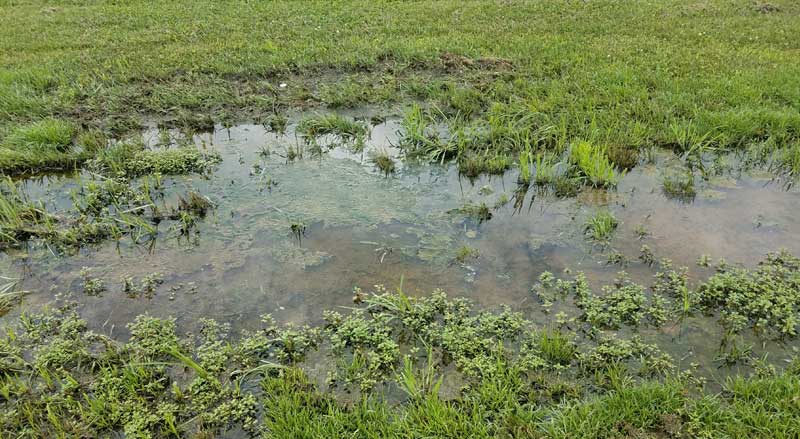The goals of all landscape drainage systems are to remove excess water from either above or below ground—or both—and prevent water damage.
A subsurface drainage system removes excess water from beneath the surface of your property. Here we discuss the role of drainage systems and the benefits of subsurface drainage systems.
The Best Water Drainage System for Your Property
An experienced landscape contractor will determine which type of drainage system will best solve your water problem.
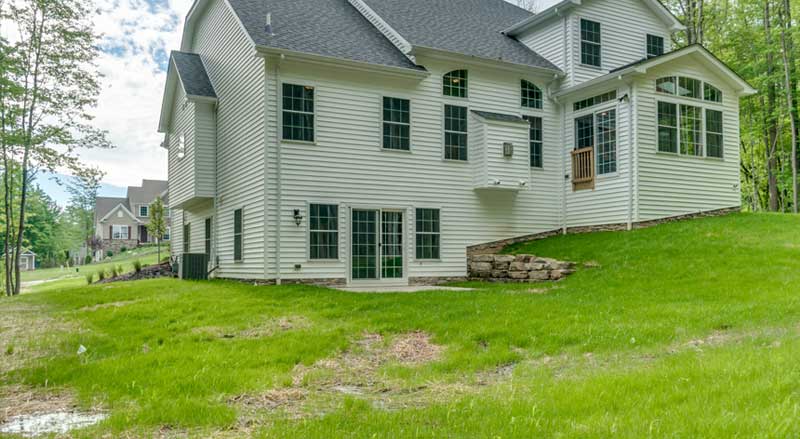
The landscaper will take these facts into consideration to determine the best drainage solution:
- Topography
- Soil type
- Runoff amounts
- Expected amount of rainfall
Types of Drainage Systems
Water drainage issues can be complicated. Water drainage solutions can be complicated as well. Sometimes it’s necessary to combine multiple drainage solutions for the best results.
Water drainage solutions can be costly. But you can be sure that the cost of an effective water drainage solution will be much less than the cost to fix water damage to your home or landscape.
Surface Drainage Systems
A surface drainage system resides above ground. It eliminates excess water from the surface of the property.
Subsurface Drainage Systems
A subsurface drainage system removes excess water that has seeped beneath the soil. The subsurface drainage system is installed beneath the landscape.
Read how pervious surface solutions ease drainage problems in your yard.
When Does a Landscape Need Subsurface Drainage?
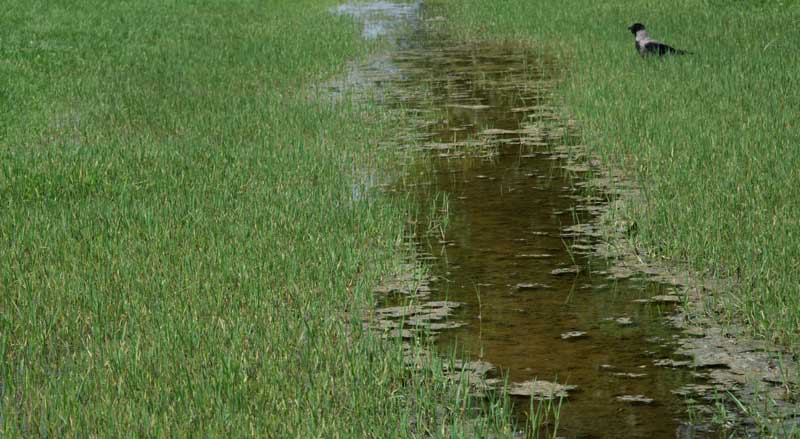
Sometimes a homeowner first tries a less expensive surface drainage system but finds that it isn’t working because too much water remains on the ground or water damage is occurring. These are signs that you need a subsurface drainage solution.
Read more about solving drainage problems with your yard.
Additional Benefits of Subsurface Drainage Systems
Subsurface drainage systems have these additional benefits for your landscape:
- They are underground and won’t detract from your landscape’s beauty
- They protect plants by removing excess water in the root zone
- Plants may respond better to plant fertilizers
- Reduced mineral imbalance and salt in the soil
- Improved soil health through aeration
Types of Subsurface Drainage Systems
French Drains (Trench Drain)
French drains collect and remove water from areas that are highly saturated with water; they prevent flooding and water damage. These systems rely on gravity to move water, so you must properly place drains.
A French drain consists of a trench filled with a perforated pipe that’s surrounded by gravel. The trench is then covered with soil to:
- keep the gravel in place
- help with the absorption of water
- keep the drain hidden from the landscape
Water easily seeps into the perforated pipe. The gravel filters out debris that might eventually cause the system to clog up.
You can install French drains around the outside of a house, or anywhere on a property where water accumulates.
Sometimes landscapers cover the drain with grass or other landscaping elements.
Mole Drainage
Mole drains are used to remove water from heavy soil. They don’t remove water that drains from above the ground but remove water that naturally occurs below the ground.
Mole drains are unlined channels dug out by a mole plough. The soil must have a high clay content to help the channel keep its open shape for many years.
There different types of mole drains are:
- Regular mole drains
- Gravel mole drains–In less cohesive soil, gravel mole drains are used to enhance the longevity of the drain
- Mole drains over a collector pipe—Used when moles can’t reach outfall because of stones, uneven surfaces, or distance
Interceptor Drains (Curtain Drains)
An interceptor drain collects and directs both subsurface and surface water. It’s needed when water from permeable soil flows over an area of impermeable soil.
Interceptor drains are often at the base of slopes where the ground is usually less permeable; water will collect at the base if there isn’t an interceptor drain to take over.
Footing Drains (External Foundation Drain)
Footing drains are placed around the perimeter of a building, and work as an exterior drainage system. They are especially helpful in areas that are prone to flooding or have a high water table.
During home construction, workers install these drains made of perforated piping right next to the base of the foundation wall. At the end of construction, they cover the gaps between the foundation and pipes with gravel. Excess water flows into the pipes and is guided away from the structure.
Footing drains protect the structure’s integrity by keeping water pressure away from the building’s foundation.
In comparison, contractors place French drains at a much shallower depth than footing drains and usually install them several feet away from the house instead of right next to the foundation. Contractors can install French drains at any time.
Groundwater Pump
A groundwater pump can reduce the water table or keep it at a workable level below ground. The pump’s effectiveness depends on the height of the water table, type of soil, and depth of the aquifer—the water-bearing geologic formation that gathers water.
Subsurface Tile Drains (Pipes)
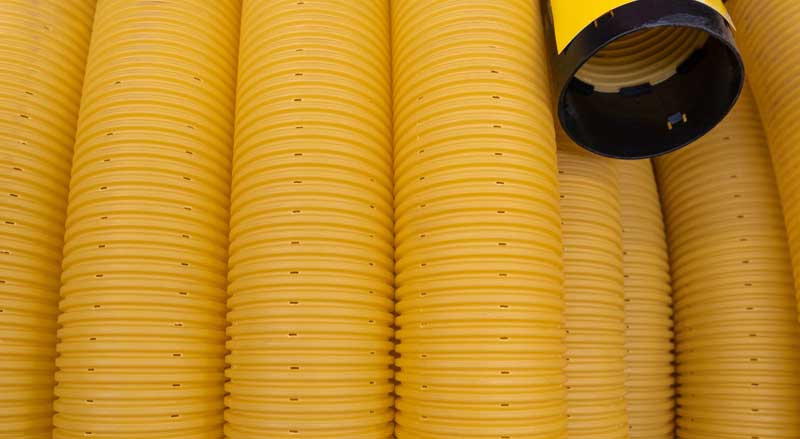
In a subsurface tile drainage system, perforated pipelines gather water underground and direct it to another area or outlet.
“Tile drainage” gets its name from the early use of short clay drainage pipes that were made of clay tiles. In the 1970s, perforated PVC or flexible corrugated plastic pipe replaced the clay pipes.
Subsurface tile drains work best in deep, pervious soil, but can also work for heavy soils that are poorly drained.
Heavy equipment will dig the trench, lay the pipes and place appropriate backfill over the laid pipeline.
A Quick Look at Other Landscape Drainage Solutions
Slope Drainage Systems
A slope drainage system relies on two things: adequately sloping land and gravity.
The installed pipes anchor to the hill and facilitate the downward flow of water. At the bottom, the water flows into catch basins. Slope drainage systems usually require little maintenance and can last for years.
Swale
A swale is a shallow above ground ditch that’s usually lined with river rocks, gravel, vegetation, or grasses. They’re installed so gravity will help water flow to a lower point, away from a building or specific area. Swales do double-duty as attractive landscaping details.
Downspouts and Gutter Systems
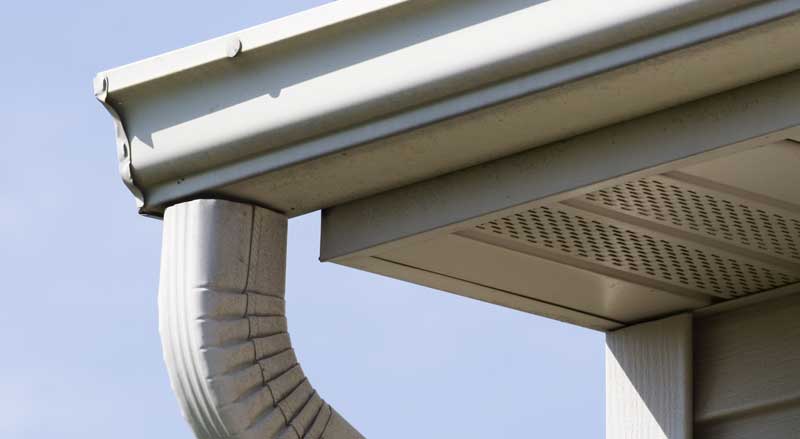
Downspouts and gutters are the most common residential drainage systems. Gutters drain rainwater off roofs into downspouts and then into extensions, buried drainpipes, or rain barrels.
Read more about landscape drainage problems and solutions.
Contact Sponzilli Landscape Group for intelligent drainage solutions and installation.

